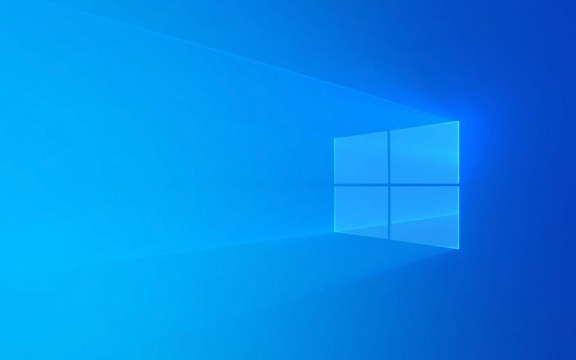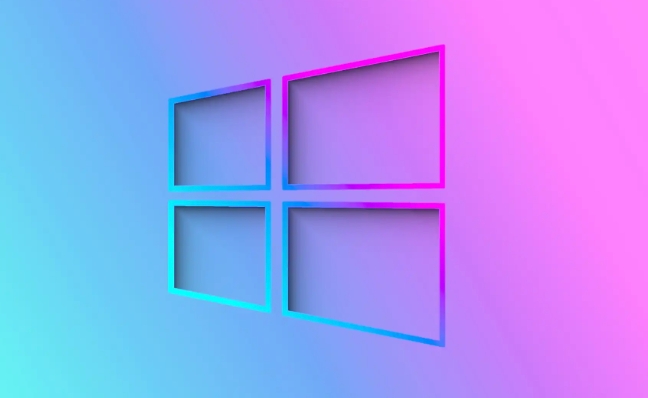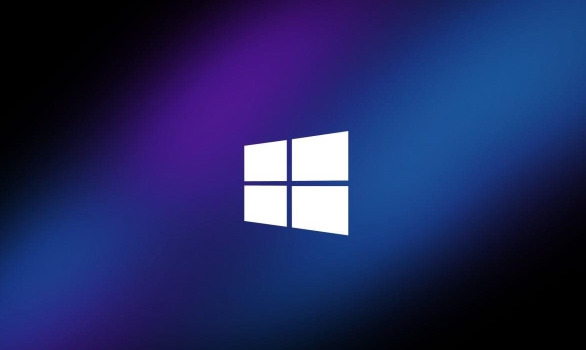How to change the default icon for a file type in Windows
Jul 31, 2025 am 08:10 AMTo change the default icon for a file type in Windows, you must modify the file association settings via the registry or use third-party tools since the Settings app does not support custom icons. 2. Using Settings, you can only change the default app for a file type, which may indirectly change the icon but does not allow custom selections. 3. For full control, edit the registry by navigating to HKEY_CLASSES_ROOT.ext to find the ProgID, then go to HKEY_CLASSES_ROOT[ProgID]\DefaultIcon, create the key if needed, and set the (Default) value to the path of the icon in the format "C:\Path\To\Icon.dll,-index" or "C:\Path\To\Icon.ico". 4. Optionally, use safe third-party tools like FileTypesMan or Default Programs Editor to change icons without manual registry editing. 5. Always back up the registry before making changes, use .ico files for compatibility, avoid modifying protected file types like .exe, and refresh File Explorer or clear the icon cache using ie4uinit.exe -ClearIconCache if changes do not appear immediately, ensuring the process is completed safely and effectively.

Changing the default icon for a file type in Windows isn't as straightforward as right-clicking and picking an option, but it’s definitely doable. Windows ties file type icons to the program associated with that extension, so to change the icon, you're essentially customizing how that file type appears in File Explorer, desktop shortcuts, and elsewhere.

Here’s how to do it properly and safely:
1. Understand How File Type Icons Work
Windows displays icons based on the file extension (like .txt, .pdf, .jpg) and the default program assigned to open it. The icon comes from either:

- The executable of the default program (e.g., Notepad.exe for
.txtfiles) - A specific icon resource defined in the system's file association settings
To change it, you need to edit the file association’s icon setting — which requires modifying how Windows interprets that file type.
2. Use Default Programs or Settings (Limited Control)
Windows Settings doesn’t let you directly change the icon, but you can change the default app, which may come with a different icon.

Steps:
- Go to Settings > Apps > Default apps
- Scroll down and click Choose default apps by file type
- Find your file extension (e.g.,
.txt) - Click the current app and choose a different one
- The icon may change automatically if the new app uses a different one
? Limitation: You can’t pick a custom icon — only switch apps.
3. Edit the Registry to Set a Custom Icon (Advanced Method)
This method gives full control. You’ll assign a custom icon to a file extension using the Windows Registry.
?? Warning: Editing the registry can cause system issues if done incorrectly. Back up the registry before proceeding.
Steps:
-
Open Registry Editor
- Press
Win R, typeregedit, and press Enter - Approve the UAC prompt
- Press
-
Navigate to the file extension key
Go to:
HKEY_CLASSES_ROOT\.ext
(Replace.extwith your extension, e.g.,.txt)Note the (Default) value — this is the "ProgID" (e.g.,
txtfile)
-
Find or create the DefaultIcon key
Using the ProgID from step 2, go to:
HKEY_CLASSES_ROOT\[ProgID]\DefaultIcon(e.g.,HKEY_CLASSES_ROOT\txtfile\DefaultIcon)If
DefaultIcondoesn’t exist, right-click thetxtfilekey → New > Key → name itDefaultIcon
-
Set the icon path
- In the
DefaultIconkey, double-click the(Default)value - Enter the path in this format:
C:\Path\To\Icon.dll,-index
orC:\Path\To\Icon.exe,0
? Examples:
-
"C:\Windows\System32\imageres.dll",-102(uses an icon from system resources) -
"C:\Icons\MyTextIcon.ico"(if using a standalone.icofile) "C:\Program Files\Notepad \notepad .exe",0
Note: Use negative index numbers for
.dllor.exefiles to access embedded icons. Positive numbers may not work. - In the
-
Restart or refresh File Explorer
- Close and reopen File Explorer
- Or restart your PC to ensure changes apply
4. Optional: Use Third-Party Tools (Easier Alternative)
If you’re not comfortable with the registry, try trusted tools that simplify the process:
- FileTypesMan (NirSoft) – Free, lightweight tool to manage file type associations and icons
- Default Programs Editor – Lets you change icons, context menus, and more with a GUI
These tools do the registry editing safely and let you preview changes.
Tips and Notes
- Always back up the registry before making changes
- Use
.icofiles for best compatibility — other image formats won’t work - Some file types (like
.exe,.dll) are protected and may not allow icon changes - Changes may not appear instantly — try clearing the icon cache:
- Open Task Manager → restart Windows Explorer
- Or run:
ie4uinit.exe -ClearIconCachein Command Prompt (Admin)
Basically, you can’t change file icons through Settings, but with a registry tweak or the right tool, it’s totally possible. Just be careful and test on non-critical file types first.
The above is the detailed content of How to change the default icon for a file type in Windows. For more information, please follow other related articles on the PHP Chinese website!

Hot AI Tools

Undress AI Tool
Undress images for free

Undresser.AI Undress
AI-powered app for creating realistic nude photos

AI Clothes Remover
Online AI tool for removing clothes from photos.

Clothoff.io
AI clothes remover

Video Face Swap
Swap faces in any video effortlessly with our completely free AI face swap tool!

Hot Article

Hot Tools

Notepad++7.3.1
Easy-to-use and free code editor

SublimeText3 Chinese version
Chinese version, very easy to use

Zend Studio 13.0.1
Powerful PHP integrated development environment

Dreamweaver CS6
Visual web development tools

SublimeText3 Mac version
God-level code editing software (SublimeText3)

Hot Topics
 How to fix remote procedure call failed error in Windows 11
Apr 14, 2023 pm 06:25 PM
How to fix remote procedure call failed error in Windows 11
Apr 14, 2023 pm 06:25 PM
A large number of Windows users have encountered the "Remote Procedure Call Failed" error on their computers. Typically, this error is reported when trying to open documents, photos, and Windows applications. This error is related to Remote Procedure Call (RPC), which is a protocol for requesting services from another program that exists on another system in the network. Therefore, it is important that RPC is always running on your PC. Are you one such user affected by this RPC call failed error on Windows PC? Then you are reading the right article. In this article, we have curated some solutions that can help you resolve this issue on your computer. Fix 1 – Change the default program that is set to open certain
 What file type is et 'Must read: How to open et files'
Feb 07, 2024 am 09:48 AM
What file type is et 'Must read: How to open et files'
Feb 07, 2024 am 09:48 AM
How to open a received file in .et format? When I send files to friends and colleagues, I receive files with the .et suffix. Cannot be opened using default program. It turns out that .et is the default table file format saved by WPS and cannot be opened by Microsoft Excel. How can I open this document without installing WPS? After the phone receives the file, you can select "Open with other applications" and then choose to upload to the mailbox. Taking QQ mailbox as an example, you can upload by sending an email to yourself. If the file is received on the computer, just open the mailbox and upload it. After uploading to the mailbox, click the attachment preview to preview the file in .et file format. This avoids having to install software just to open a file. Of course for
 Use java's File.isDirectory() function to determine whether the file exists and is a directory type
Jul 24, 2023 pm 06:57 PM
Use java's File.isDirectory() function to determine whether the file exists and is a directory type
Jul 24, 2023 pm 06:57 PM
Use Java's File.isDirectory() function to determine whether a file exists and is of directory type. In Java programming, you often encounter situations where you need to determine whether a file exists and is of directory type. Java provides the File class to operate files and directories. The isDirectory() function can help us determine whether a file is a directory type. The File.isDirectory() function is a method in the File class. Its function is to determine the current File
 How to change file type in win7
Oct 23, 2023 pm 01:50 PM
How to change file type in win7
Oct 23, 2023 pm 01:50 PM
The ways to change the file type in win7 include changing the file type through the file extension or changing the file concept through the control panel. Detailed introduction: 1. Change the file type through the file extension. Find the file you want to change the file type, right-click the file, select the "Rename" option, enter a dot "." after the file name, and then enter the desired File extension, press the "Enter" key to confirm the change, the system will change the file type to the type corresponding to the specified file extension; 2. Change the file association through the control panel, open the "Control Panel" and so on.
 What can be used to unambiguously represent unique files in a folder?
Aug 01, 2022 pm 01:43 PM
What can be used to unambiguously represent unique files in a folder?
Aug 01, 2022 pm 01:43 PM
A unique file within a folder can be clearly identified via a "file name". The file name is an identifier of the file's existence, and the operating system controls and manages it based on the file name; in order to facilitate people to distinguish different files in the computer, each file needs to be given a designated name. Files in the same folder have unique file names and cannot be repeated; but file names in different folders can be the same.
 What type of file is a dat file?
Feb 19, 2024 am 11:32 AM
What type of file is a dat file?
Feb 19, 2024 am 11:32 AM
The dat file is a universal data file format that can be used to store various types of data. dat files can contain different data forms such as text, images, audio, and video. It is widely used in many different applications and operating systems. dat files are typically binary files that store data in bytes rather than text. This means that dat files cannot be modified or their contents viewed directly through a text editor. Instead, specific software or tools are required to process and parse the data of dat files. d
 Interpretation of the hidden information of Linux file type colors
Feb 21, 2024 pm 03:45 PM
Interpretation of the hidden information of Linux file type colors
Feb 21, 2024 pm 03:45 PM
In modern operating systems, the file system is a very important and basic component. In Linux systems, each file has a unique file type, and these file types are usually represented by different colors. This article will delve into the hidden information of Linux file type colors and lead readers to decipher the mysteries hidden behind these mysterious colors. First, let’s take a look at the common file types and their corresponding colors in Linux: Ordinary files: general text files, binary files, etc., usually displayed in white
![How to Search in Windows 11 [4 Ways to Explain]](https://img.php.cn/upload/article/000/465/014/168138726979003.png?x-oss-process=image/resize,m_fill,h_207,w_330) How to Search in Windows 11 [4 Ways to Explain]
Apr 13, 2023 pm 08:01 PM
How to Search in Windows 11 [4 Ways to Explain]
Apr 13, 2023 pm 08:01 PM
What's new in Windows 11 Search? Windows 11 brings a lot of low-level improvements to Search, but there aren't many noticeable changes to how Windows Search works externally. Nonetheless, you can still expect the following new changes to Windows Search. New taskbar icon Dedicated file type search Access search settings from the Start menu Support for cloud search combined with cloud storage services Comprehensive indexing options Faster results Efficient indexing with low battery usage on mobile devices






